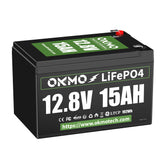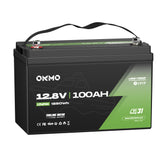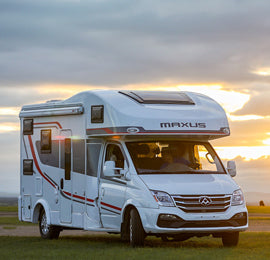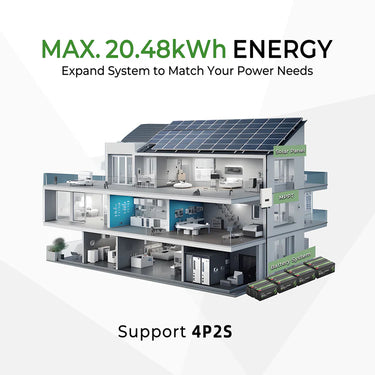How Long Does it Take to Charge a Car Battery ?
 When a car "breaks down" in the garage due to a dead battery, the driver’s most urgent question is often: "How long until I can hit the road again?" The answer is far from simple—it’s deeply tied to inherent differences in battery technology. The three mainstream car battery types on the market today—lead-acid, lithium-ion (Li-ion), and nickel-metal hydride (NiMH)—show stark contrasts in charging efficiency, rooted in fundamental divergences in materials science and electrochemistry.
When a car "breaks down" in the garage due to a dead battery, the driver’s most urgent question is often: "How long until I can hit the road again?" The answer is far from simple—it’s deeply tied to inherent differences in battery technology. The three mainstream car battery types on the market today—lead-acid, lithium-ion (Li-ion), and nickel-metal hydride (NiMH)—show stark contrasts in charging efficiency, rooted in fundamental divergences in materials science and electrochemistry.
I. Core Differences: Principles and Charging Characteristics of Three Battery Technologies
| Battery Type | Chemical Composition | Charging Principle | Key Factors Affecting Efficiency |
|---|---|---|---|
| Lead-Acid | Lead plates + sulfuric acid electrolyte | Conversion of lead sulfate to lead and lead dioxide | Slow electrolyte diffusion, prone to polarization, sensitive to overcharging |
| Lithium-Ion (Li-ion) | Lithium compound cathode + graphite anode | Embedding/de-embedding of lithium ions between electrodes | Fast ion migration, low internal resistance, precise voltage control |
| Nickel-Metal Hydride (NiMH) | Nickel oxide cathode + hydrogen-absorbing alloy anode | Transfer of hydrogen ions between nickel oxide and alloy | Weak memory effect, but high self-discharge rate |
 II. Charging Time Showdown: Efficiency and Scenario Adaptability
II. Charging Time Showdown: Efficiency and Scenario Adaptability
1. Lead-Acid Batteries: Cost-Effective but Least Efficient
-
Standard Charging: 10–12 hours
Traditional constant-voltage charging requires a low current (~10% of capacity) for slow replenishment to prevent plate sulfation. Example: A 60Ah battery needs 6A current for 10 hours. -
Fast Charging: 4–6 hours (high risk)
Increasing current to 15–20A speeds up charging but risks electrolyte boiling and plate deformation. Long-term use may reduce capacity by >30%. -
Best For: Fuel-powered vehicle starter batteries, low-cost energy storage. Advantages include mature recycling and low price (¥300–800 ≈ $40–110), but low energy density (30–50Wh/kg) limits charging speed.
2. Lithium-Ion Batteries: Fast-Charging Champion, Rapidly Evolving
-
Home Slow Charging: 4–8 hours
A 7kW home charger refills a 60kWh battery (e.g., Tesla Model 3) in ~8 hours, ideal for overnight off-peak charging. -
DC Fast Charging: 80% in 30 minutes
Ternary lithium (e.g., NCM811) supports >2C rates. 800V high-voltage platforms (e.g., Porsche Taycan) achieve 5-minute charging for 100km range. LiFePO₄ batteries max out at ~1.5C. -
Tech Breakthroughs: Silicon-carbon anodes and solid-state electrolytes are pushing rates to 4C–6C, potentially enabling 10-minute full charges.
-
Market Share: >90% of global EV batteries in 2023; costs fell below $100/kWh (BloombergNEF).
3. Nickel-Metal Hydride: Reliable but Fading
-
Standard Charging: 6–8 hours
More efficient than lead-acid but slower than Li-ion. Hydrogen ion diffusion limits speed; fast charging risks overheating. -
Partial Cycling Strength: Ideal for hybrids (e.g., Toyota Prius). Lifespan reaches 10 years when cycling between 20%–80% state-of-charge (SOC).
-
Downsides: 20% monthly self-discharge (vs. 5% for lead-acid), significant high-temperature decay. Gradually being replaced by Li-ion.
 III. The Deep Competition Behind Charging Time
III. The Deep Competition Behind Charging Time
-
Energy Density (Wh/kg)
-
Li-ion: 150–250
-
NiMH: 60–120
-
Lead-acid: 30–50
→ Higher density reduces absolute charging time for equivalent range.
-
-
Charge Rate (C-Rate)
-
Li-ion: 1C–3C (63%–95% in 1 hour)
-
Lead-acid: 0.1C–0.3C
→ Higher rates enable stronger current tolerance without structural damage.
-
-
Thermal Management Needs
-
Li-ion requires precise cooling (20°C–45°C optimal); liquid systems add complexity.
-
Lead-acid tolerates wider temps (-20°C–50°C) but emits gas at high heat.
→ Thermal runaway risks cap fast-charging potential.
-
 IV. Future Trends: Key Breakthroughs in Fast-Charging Tech
IV. Future Trends: Key Breakthroughs in Fast-Charging Tech
-
Ultra-Fast Network Expansion: Tesla V4 Superchargers (350kW) + 4680 batteries enable 15-minute 80% charging.
-
Battery Material Innovations: CATL’s Qilin (Kirin) battery uses multi-tab design for 50% better thermal conductivity; semi-solid batteries (e.g., NIO 150kWh pack) solve lithium dendrite issues.
-
Smart Charging Strategies: AI-optimized curves, e.g., pre-heating batteries before high-current injection.
Conclusion: The Art of Balancing Efficiency and Cost
Lead-acid batteries dominate the starter market with extreme cost efficiency. NiMH serves hybrids with superior cycle stability. Li-ion powers the EV revolution through unmatched energy density and fast-charging. For users, choosing a battery means choosing an energy philosophy:
-
Choose Li-ion for speed—embrace tech advantages at a premium.
-
Choose NiMH for stability—ideal for mild hybrid driving.
-
Choose lead-acid for savings—budget-friendly for fuel cars, but embrace the "slow-charging philosophy".
As lithium costs keep falling (projected $60/kWh by 2030) and sodium-ion batteries commercialize, charging time will shift from a source of range anxiety to a testament to technological democratization.








